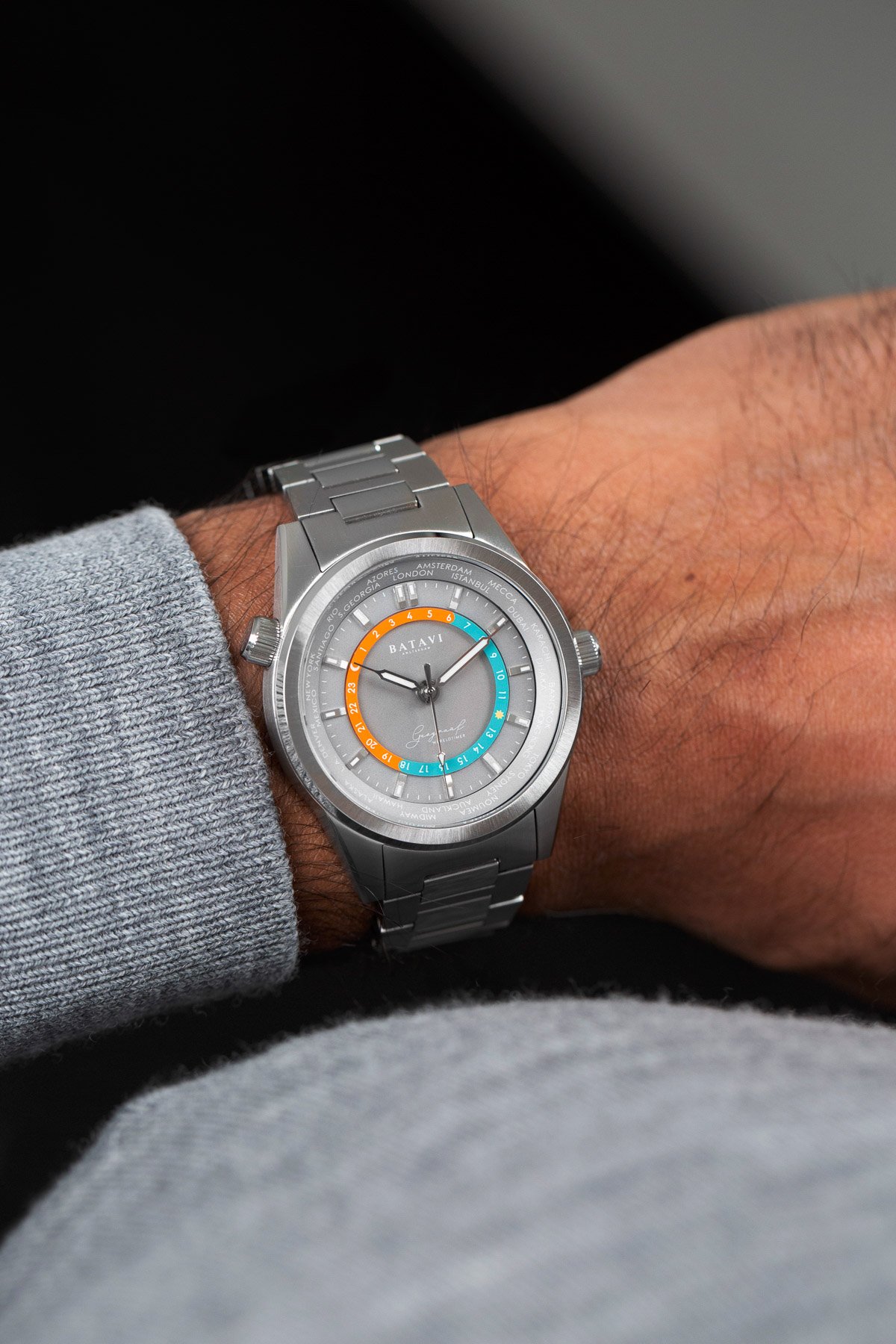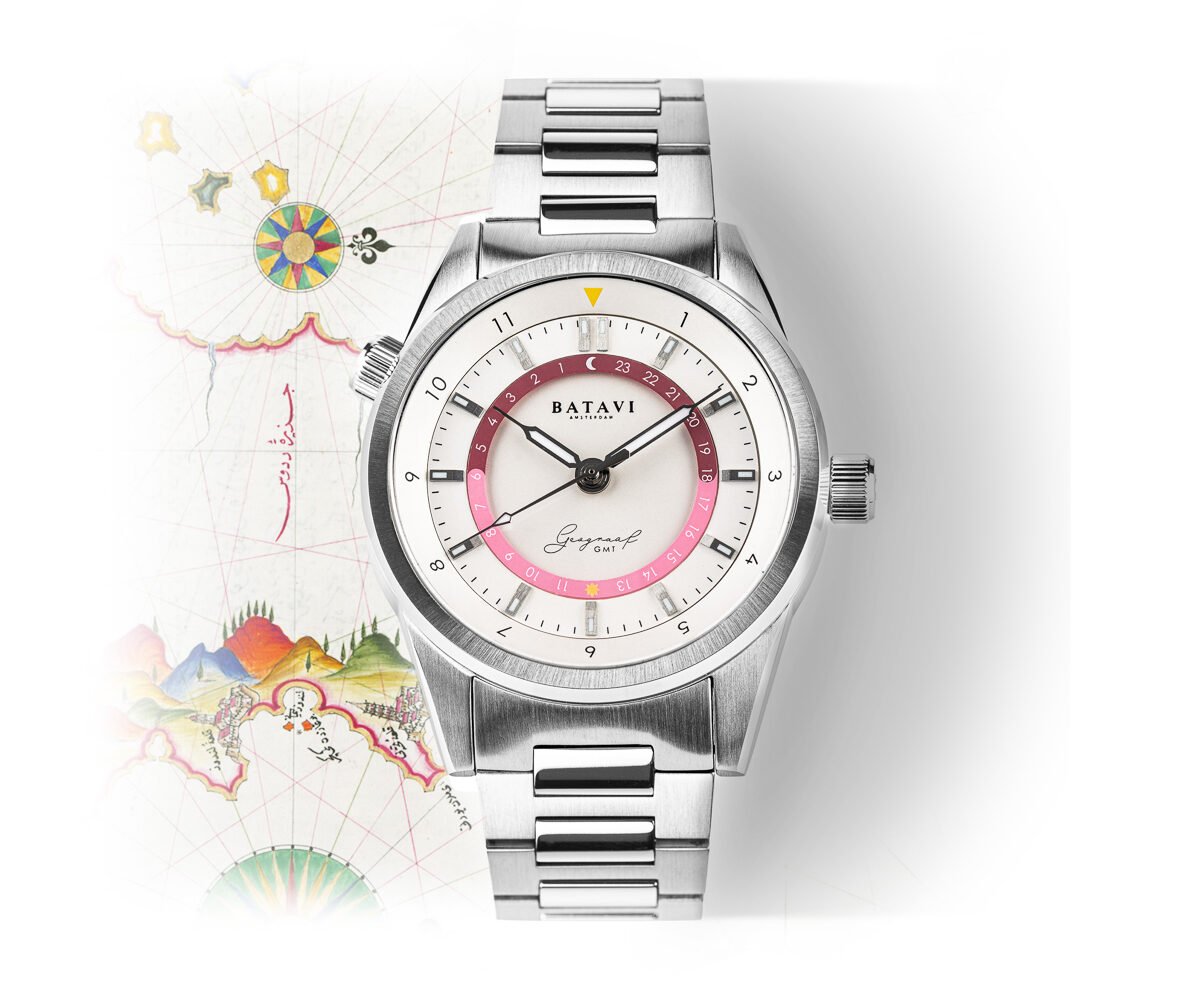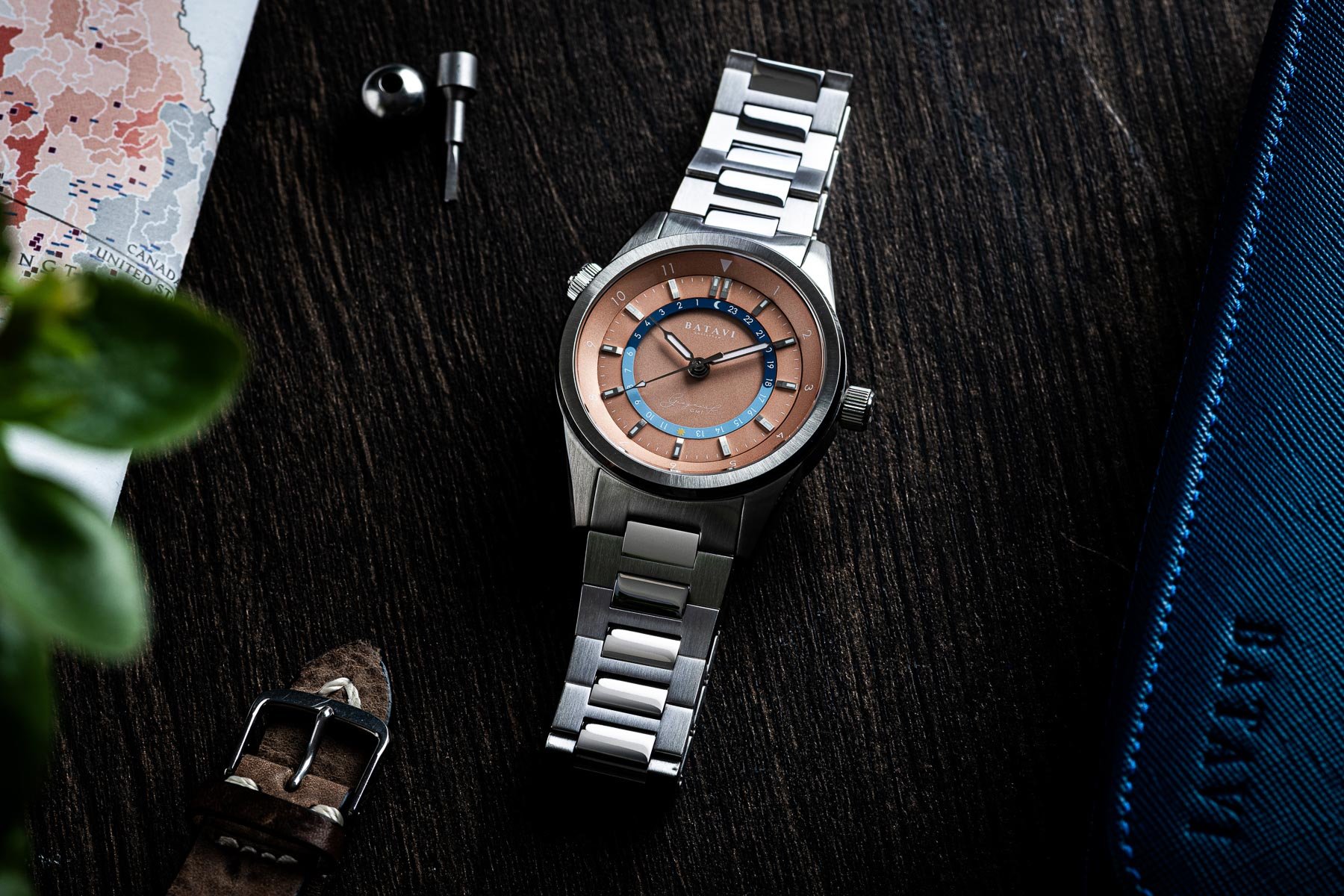Hot Take: The Batavi Geograaf GMT And Wereldtimer
With its origins in a love for vintage and a fascination for microbrands, Batavi is a brand that has aspired to bring something unique to the table. Whether in terms of design or color, the Dutch brand’s watches have always had a unique flair to them, resonating with its motto, “modern design, vintage soul.” Today, we are happy to introduce the latest addition to the brand’s offerings, in the form of the Batavi Geograaf GMT and Wereldtimer models. The brand uses the same clever mechanism on both to achieve the rather useful complication. Coming in well-aligned to the brand’s previous offerings, the four new models introduce new colorways in pleasant pastel tones.
You might already be familiar with the Batavi Architect and Kosmopoliet models that we previously covered on Fratello. The time-only Architect put focus on its many interesting dial executions. Different textures and materials give this modern integrated-bracelet timepiece plenty of character. The Kosmopoliet was the brand’s first foray into producing a GMT watch. It featured a more traditional extra hand and external 24-hour bezel used to track an additional time zone.

The Batavi Geograaf GMT and Wereldtimer
Batavi’s latest model, the Geograaf, re-visits this second-timezone idea, but in two different ways. Instead of an additional hand with an external bezel, the GMT model uses a rotating 24-hour disk and an internal rotating 12-hour rehaut. The Wereldtimer features a city ring instead of the 12-hour rehaut in combination with the 24-hour ring to provide an overview of the time worldwide. Two different colorways are available for each model. The colors and combinations, however, are not ones you usually see, and the pastel tones give the watches a rather unique look. With the addition of nicely incorporated sun and moon symbols, the colors also indicate night and day on the 24-hour ring. Personally, my favorite model is the one with the gray dial and the blue-and-orange 24-hour ring. That said, you really can’t go wrong with any of the eye-catching combinations.

Silver syringe hands rotate above the dial, indicating the time along with the angular, lume-filled applied markers. The 39mm × 48mm × 13mm stainless steel case features two crowns. There is one at the traditional 3-o’clock position and another, which controls the internal city/12-hour ring, at the 10-o’clock position. These crowns interact with the Swiss Soprod C125 movement inside. This caliber keeps the watch ticking for 42 hours at 28,800vph, and it is visible through the screw-down exhibition case back. The watch is rated to 200m of water resistance, so you’ll be able to take it along on all your travels without having to worry about falling into a pool, or taking it off for an impromptu scuba-diving course. The steel H-link bracelet will keep it securely fastened to your wrist. But the watch looks equally good on a leather strap.

Final Thoughts
These wonderful pieces of Dutch design will be up for grabs on Kickstarter in May. Early-bird prices will start at around €599–649, which is a brilliant price for a unique timepiece featuring a Swiss movement and one of the most useful complications. Reasonably sized and nicely finished with a radially brushed bezel as the highlight of the case, it’s a watch that’s bound to impress. It’s also one we hope to have in for hands-on review shortly!

What are your first impressions and thoughts about the Batavi Geograaf GMT and Wereldtimer watches? Let me know in the comments below.
For more information, head on over to the Batavi website.
